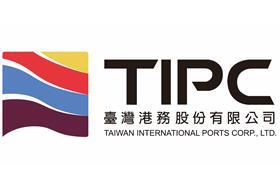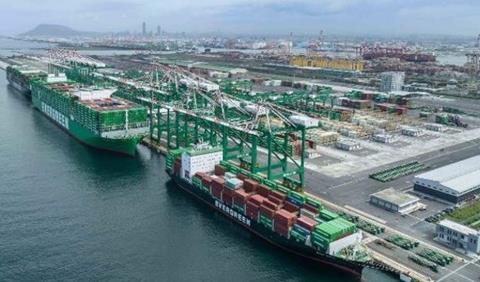The Taiwan International Ports Corporation (TIPC) announced today that Taiwan’s international commercial ports continued performing well through 2023…

The Taiwan International Ports Corporation (TIPC) announced today that Taiwan’s international commercial ports continued performing well through 2023 against the headwinds of global inflationary pressures and international political and economic instability. In addition to successfully recruiting new businesses to Taiwan ports, TIPC realized growth this past year in its cargo shipping, offshore wind farm, cruise and ferry passenger, and tourism business segments. Moreover, group revenues for the year are expected to reach an all-time high of NT$28.1 billion, while cargo and container volumes should top 666 million R/T and 13.6 million TEU, respectively. The momentum will continue through 2024 with the continuation of new major infrastructure projects, development of coastal / waterside commercial opportunities, and smart transformation initiatives. Also, ESG principles and standards will be formally implemented throughout the TIPC in support of diversification, smart transformation, and sustainable port goals.
With regard to container handling, TIPC subsidiary Port of Kaohsiung’s ongoing efforts to reorganize and streamline wharf operations were critical to achieving last year’s higher container handling numbers. Also, commercial operations began last May at Phase One of Port of Kaohsiung’s Container Terminal No.7, Taiwan’s first and most-advanced automated smart terminal, with commercial operations at Phase Two slated to commence in July of this year. When fully operational, this state-of-the-art terminal will be capable of concurrently handling four 24,000TEU “megamax” container ships. In addition, TIPC signed new and renewed leases with Wan Hai and Hyundai Merchant Marine (HMM) Pacific at Port of Kaohsiung’s 5th Container Terminal, where TIPC has already begun dredging work to further deepen wharf water depths to -17.5m.

In the realm of offshore wind farm development and support efforts, two new heavy lift wharves were completed last year (2023) at Port of Taichung (Wharf 42) and Anping Port (Wharf 11), and two additional heavy lift wharves are slated for completion at Port of Taichung (Wharf Nos. 37 and 38) in 2025. This new infrastructure will ready Taiwan ports to fully meet the turbine components assembly and temporary storage requirements of phase three of Taiwan’s national wind farm development plan.
With regard to cruise / ferry passenger and tourism business segments, Port of Kaohsiung’s all-new Kaohsiung Port Cruise Terminal officially opened in March of last year, with Far EasTone, Tai Urban Resort, Ever Rich Duty Free, and other consumer-oriented businesses already operating onsite. In addition, new passenger terminal facilities at Port of Hualien and Suao Port are nearing completion as well. Notably, cruise passenger volumes have rebounded at Taiwan’s primary cruise ports, Keelung and Kaohsiung, with over 320 cruise ship calls and some 550,000 passengers handled last year, which is already roughly half of the pre-pandemic peak. TIPC’s leasing activities last year were also impressive, with 412 leases signed netting an estimated NT$26.7 billion in new private sector investment in TIPC ports.

As a critical link in the domestic industry supply chain, TIPC ports must also be at the forefront of smart-tech and sustainable development trends to continue providing high quality, efficient services with a minimal carbon footprint. In 2023, new maritime weather forecast and warning and seismic alert systems installed at TIPC subsidiary ports have further sharpened operational safety and efficiencies, while new environmental quality monitoring stations are directly supporting port environmental quality management efforts. Also, smart energy management systems are keeping TIPC ports on track to achieving 2050 net zero emission goals. Importantly, TIPC’s annual NT$6 million incentive awards program to facilitate the digital transformation of shipping and port businesses has garnered over 30 proposals in recent years, helping unleash around NT$524 million in new digital-transformation-related investments. TIPC’s sustainable development and workplace improvement investments have been increasingly recognized and honored with a string of recent awards and honors, including the TCSA Corporate Sustainability Reports (CSR) Gold Award for the Transportation Sector and TCSA Corporate ESG Performance Award for Circular Economy Leadership. TIPC was also listed as one of the “Best Companies to Work for in Asia” and honored with a “Parent-Child Friendly Workplace Award” and three consecutive “Happiest Employee” awards.
During 2024, TIPC will continue developing and upgrading basic port infrastructures, improving the utilization of port land, expanding into new business areas, and attracting new businesses and investment. Moreover, leveraging the steady implementation of smart-port plans, new and emerging technologies promise to continue making TIPC port operations smarter and more efficient. TIPC will also continue partnering with firms in the port and shipping sectors on digital transformation and with the government on low-carbon and energy transformation policy initiatives to achieve a low carbon footprint for both direct and indirect port activities. TIPC is on track to halving carbon emissions by 2030 and reaching net zero by 2050, creating modern international commercial ports that reflect the highest levels of safety, efficiency, quality and sustainability.
Provided by Planning and Development Dept., TIPC
Shu-hui Tsai | Senior Manager
07-2136921 | T02063@twport.com.tw












